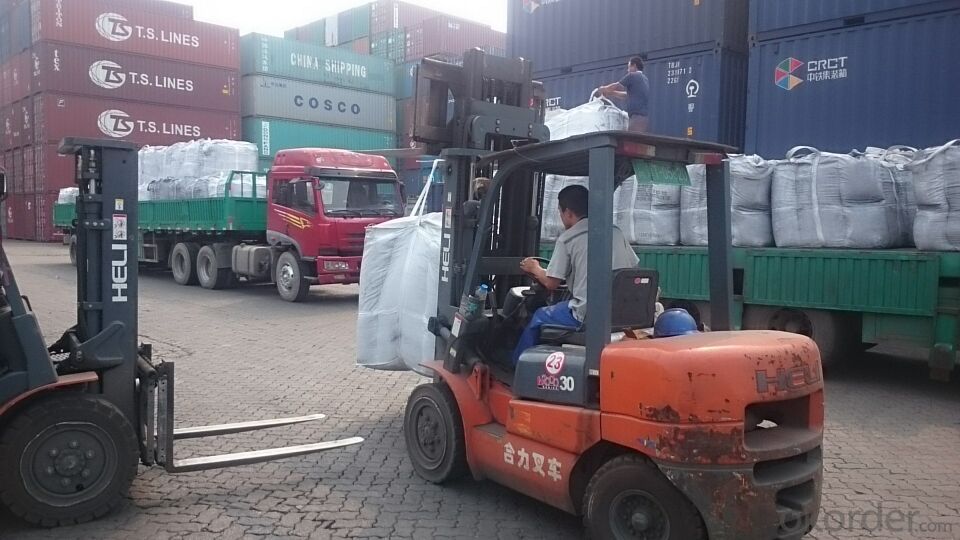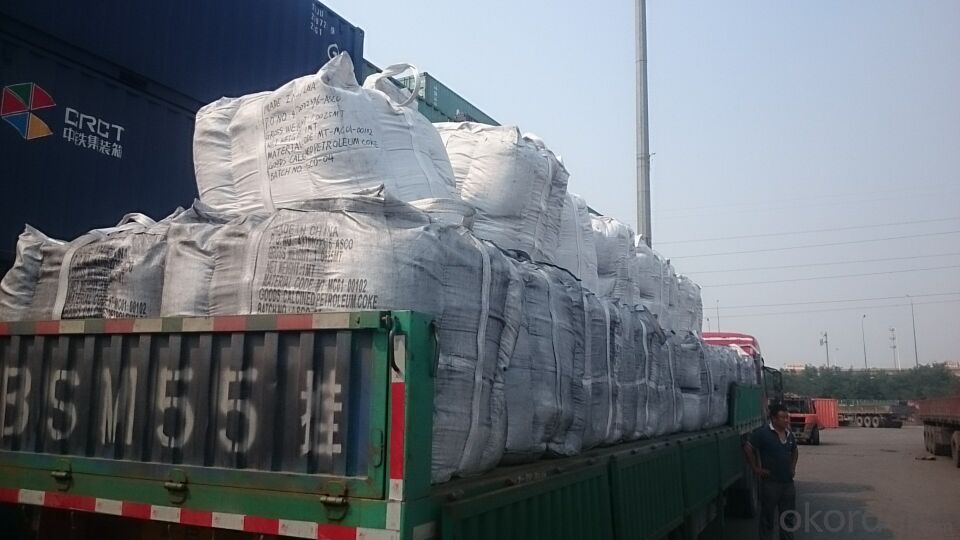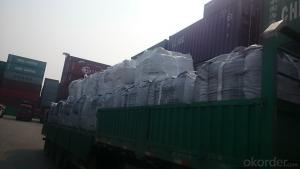GPC with lower Sulphur0.03% max in bigger size
- Loading Port:
- Tianjin
- Payment Terms:
- TT OR LC
- Min Order Qty:
- 20 m.t.
- Supply Capability:
- 5000 m.t./month
OKorder Service Pledge
OKorder Financial Service
You Might Also Like
Introduction:
GPC has good characteristics with low ash, low resistivity, low sulphur, high carbon and high density. It is the best material for high quality carbon products. It is used as carbon additive in steel industry or fuel.
Features:
1.Our strong team provide you reliable service that make you feel purchasing is more easier
2. We ensure that we can supply capability with competitive price.
3. Work strictly to guarantee product quality,
4. Highest standard of integrity. Guarantee customer's benefit.
5. Supplying Pet Coke, Met coke, Foundry Coke, Carbon Raiser etc.
Specifications:
F.C.% | 95MIN | 94MIN | 93MIN | 92MIN | 90MIN | 85MIN | 84MIN |
ASH % | 4MAX | 5MAX | 6 MAX | 6.5MAX | 8.5MAX | 12MAX | 13MAX |
V.M.% | 1 MAX | 1MAX | 1.0MAX | 1.5MAX | 1.5MAX | 3 MAX | 3 MAX |
SULFUR % | 0.3MAX | 0.3MAX | 0.3MAX | 0.35MAX | 0.35MAX | 0.5MAX | 0.5MAX |
MOISTURE % | 0.5MAX | 0.5MAX | 0.5MAX | 0.5MAX | 0.5MAX | 1MAX | 1MAX |
Pictures



FAQ:
1. Your specification is not very suitable for us.
Please offer us specific indicators by TM or email. We will give you feedback as soon as possible.
2. When can I get the price?
We usually quote within 24 hours after getting your detailed requirements, like size, quantity etc. .
If it is an urgent order, you can call us directly.
3. Do you provide samples?
Yes, samples are available for you to check our quality.
Samples delivery time will be about 3-10 days.
4. What about the lead time for mass product?
The lead time is based on the quantity, about 7-15 days. For graphite product, apply Dual-use items license need about 15-20 working days.
5. What is your terms of delivery?
We accept FOB, CFR, CIF, EXW, etc. You can choose the most convenient way for you. Besides that,
we can also shipping by Air and Express.
6. Product packaging?
We are packed in bulk ship or in ton bag or placing in container or according to your requirements.
7. Notice
please note that the price on Alibaba is a rough price. The actual price will depends on raw materials, exchange rate wage and your order quantity .Hope to cooperation with you, thanks !
- Q:How do you remove car carbon?
- 3, running high speed can flush carbon deposition? Running high speed, you can really use the airflow on the airway erosion, wash away part of the carbon deposition. So, if you happen to go out, there are high-speed, national road two choices, you may choose to pull back to speed. But, Ma director thinks, if be in order to "flush carbon deposit" specially, want to run high speed, do not have this necessity. "It is a waste of time, and the cost of oil, extra high speed tolls, the effect is better to do a maintenance 4S shop!" 4, improve the shift speed, such as the original speed 2000rpm shift, modified 2500rpm conversion, generated can prevent carbon deposition, but also to protect the engine? Ma director said, low speed the shift, is often said that the "drag block", the car is easy to knock, the combustion of gasoline is not sufficient to carbon deposition. But it's not necessary for people to increase gear speed - that will increase fuel consumption and cause premature wear of clutch friction plates. So, manual transmission of the car, 1.6 ~ 2.0L displacement, about 2000 rpm shift is more economical, and no need to improve; and automatic car, pay attention not to slam the gas.
- Q:What is carbon nanoelectronics?
- Carbon nanoelectronics refers to the field of study and technology that focuses on using carbon-based materials, particularly carbon nanotubes or graphene, to create electronic devices and components at the nanoscale. These materials possess unique electrical and mechanical properties, making them highly promising for developing faster, smaller, and more efficient electronic devices such as transistors, sensors, and memory storage units.
- Q:How long will it last? 10National Day would like to do carbon baking ribs at home, how to do, how to marinate? For how long?.. Don't copy sticky posts. Now, tour TV's "eating meat" on earth is recorded in a grilled pork chop, wondering how that is done
- Use 1 tablespoons olive oil, 2 cloves of garlic, 2 tablespoons fresh Brazil, half lemon juice, 1 tablespoon Thyme, 1 jin spareribs, a little salt and black pepper method, 1. whole ribs washed, put the ingredients, marinated pork ribs 2 hours. 2., with charcoal fire roast ribs, while baking and brush ingredients, baked until golden. 3. if the oven can be placed in the oven 180C temperature, bake until golden
- Q:Paint paint fluorocarbon paint which expensive?
- Paint is divided into two categories, a class of low temperature baking paint, curing temperature of 140 degrees -180 degrees, and the other category is called high temperature baking paint, its curing temperature is 280 degrees -400 degrees.High temperature baking also known as Teflon (Teflon) English called Polytetrafluoroetylene, referred to as Teflon, PTFE and F4. High performance special Teflon coating is fluorine coating resin with polytetrafluoroethylene, English name for Teflon, because the pronunciation of reason, commonly known as Teflon, Tie Fulong, Teflon, Teflon and so on (all Teflon transliteration).
- Q:How does carbon dioxide contribute to global warming?
- The primary cause of global warming is the contribution of carbon dioxide (CO2) through the greenhouse effect. This phenomenon arises when specific gases in the Earth's atmosphere trap solar heat, preventing its escape into space. Although the greenhouse effect is a natural process that aids in preserving the Earth's temperature, human activities, particularly the combustion of fossil fuels, have significantly raised the concentration of CO2 in the atmosphere. When fossil fuels such as coal, oil, and natural gas are burned for energy generation, they release CO2 as a byproduct. This surplus of CO2 functions as a gas that traps heat, absorbing and subsequently emitting heat radiation that would otherwise dissipate into space. Consequently, the Earth's temperature is increasing, resulting in global warming. The repercussions of elevated global temperatures are extensive. They expedite the melting of polar ice caps and glaciers, leading to rising sea levels that jeopardize coastal regions and low-lying islands. Additionally, they disrupt weather patterns, resulting in more frequent and severe occurrences of heatwaves, droughts, hurricanes, and floods. Furthermore, global warming adversely affects ecosystems by causing shifts in habitats, loss of biodiversity, and detrimental impacts on plant and animal species. Reducing carbon dioxide emissions is of utmost importance in mitigating global warming. This objective can be accomplished through diverse approaches, such as transitioning to renewable energy sources, enhancing energy efficiency, investing in sustainable transportation, and implementing practices that foster reforestation and carbon sequestration. By undertaking these measures, we can decelerate the pace of global warming and alleviate its detrimental effects on both the planet and its inhabitants.
- Q:How is carbon used in the production of carbon nanowires?
- Carbon's unique properties make it a key component in the production of carbon nanowires. These nanowires are typically created through a process called chemical vapor deposition (CVD), in which a carbon-containing precursor gas is decomposed in a high-temperature environment. To carry out this process, a reaction chamber is utilized, where a carbon source like methane or ethylene is introduced. The precursor gas is then heated to a temperature above 600 degrees Celsius, causing it to decompose. This results in the release of carbon atoms that begin to deposit on a substrate material, such as a silicon wafer or metal catalyst. The carbon atoms in the precursor gas tend to form strong covalent bonds with each other, leading to the formation of a graphite-like structure. However, by carefully controlling the growth conditions, including temperature and pressure, the deposited carbon atoms can be arranged in a highly ordered manner to form nanowires. The use of carbon as the fundamental building block for nanowires offers several advantages, including exceptional thermal and electrical conductivity, as well as high mechanical strength. These properties enable carbon nanowires to exhibit unique characteristics, making them suitable for a wide range of applications, such as electronics, energy storage, and sensors. Overall, carbon plays a crucial role in the production of carbon nanowires as the raw material that undergoes decomposition and subsequent rearrangement to achieve the desired nanoscale structures.
- Q:How does carbon affect the formation of tornadoes?
- Carbon does not directly affect the formation of tornadoes. Tornadoes are primarily caused by the interaction of warm, moist air from the surface and cold, dry air from the upper levels of the atmosphere, resulting in strong updrafts and rotating air columns. Carbon, as an element, does not play a significant role in this process. However, indirectly, carbon emissions and human-induced climate change can impact the overall weather patterns, including the frequency and intensity of tornadoes. Increased carbon dioxide in the atmosphere, primarily from the burning of fossil fuels, contributes to global warming. This, in turn, leads to changes in temperature and moisture patterns, which can influence the conditions conducive to tornado formation. The warming of the atmosphere due to increased carbon dioxide levels can lead to more instability in the atmosphere, creating favorable conditions for severe thunderstorms, which can spawn tornadoes. Additionally, the increased moisture content in the warmer atmosphere can provide more fuel for these storms, potentially enhancing their strength. It is important to note, however, that the relationship between carbon emissions and tornadoes is complex and still an area of ongoing research. While a connection between climate change and tornadoes is plausible, it is challenging to attribute individual tornadoes to carbon emissions alone, as tornadoes are influenced by various meteorological factors. In summary, carbon does not directly impact the formation of tornadoes, but the increased carbon emissions and resulting climate change can indirectly influence the conditions that contribute to tornado formation. Further scientific research is needed to fully understand the relationship between carbon emissions, climate change, and tornado activity.
- Q:What are carbon offsets?
- Carbon offsets are a mechanism used to help reduce greenhouse gas emissions and combat climate change. They are essentially a way for individuals, organizations, or businesses to compensate for their own carbon dioxide (CO2) emissions by investing in projects that reduce emissions elsewhere. The concept behind carbon offsets is based on the understanding that emissions reduction can be achieved in various ways and at different costs. Instead of solely focusing on reducing their own emissions, carbon offsetting enables individuals or entities to support projects that can achieve greater emission reductions per unit of cost. These projects can include renewable energy, energy efficiency, reforestation, and methane capture, among others. To acquire carbon offsets, individuals or organizations typically calculate their own carbon footprint by assessing the amount of CO2 they emit through their activities, such as energy consumption or transportation. After quantifying their emissions, they can purchase carbon offsets equivalent to the amount of CO2 they have emitted. These offsets are generated by projects that are independently verified and certified by recognized standards and registries. Once the carbon offsets are purchased, they are effectively canceled or retired, ensuring that the emissions reduction achieved by the project is not double-counted or claimed by someone else. By investing in carbon offsets, individuals or organizations can effectively neutralize their own emissions and contribute to global efforts to address climate change. However, it is important to note that carbon offsets should not be seen as a substitute for reducing emissions at the source. They should be used as a complementary tool to support emission reduction efforts, while simultaneously implementing measures to minimize our own emissions through energy efficiency, renewable energy adoption, and sustainable practices.
- Q:How does carbon impact the acidity of rainfall?
- Carbon does impact the acidity of rainfall through a process known as acid rain. When carbon dioxide (CO2) is released into the atmosphere, it combines with water (H2O) and forms carbonic acid (H2CO3). This reaction occurs naturally, but human activities such as burning fossil fuels and industrial processes have significantly increased the amount of carbon dioxide in the atmosphere. When carbonic acid is formed, it can react with other compounds in the air, such as sulfur dioxide (SO2) and nitrogen oxides (NOx), to form even stronger acids like sulfuric acid (H2SO4) and nitric acid (HNO3). These acids then dissolve in rainwater, forming acid rain. The presence of carbon in the atmosphere contributes to the overall acidity of rainfall. Acid rain has detrimental effects on the environment, ecosystems, and human health. It can damage forests, lakes, and rivers, leading to the depletion of fish populations and the destruction of habitats. Acid rain can also erode buildings and monuments, corrode metals, and harm crops. The impacts of carbon on the acidity of rainfall highlight the importance of reducing carbon emissions and addressing climate change. By transitioning to cleaner energy sources, implementing sustainable practices, and reducing our carbon footprint, we can help mitigate the acidity of rainfall and minimize the negative consequences associated with acid rain.
- Q:What are the main factors that affect the strength of carbon fibers?
- [Abstract]: the interface play on the properties of carbon fiber composite material plays a very important role, the composite load transfer through the interface, can make the carbon fiber and the matrix to form an effective performance of the whole. In the study of the interface, improving the bonding strength is the key to improve the mechanical properties of the carbon fiber composite. Therefore, it is very important to analyze the influence of various factors on the interfacial bonding strength of carbon fiber reinforced composites for improving the comprehensive properties of composites. In this paper, by using scanning electron microscopy (SEM), X ray photoelectron spectroscopy (XPS), laser Raman spectroscopy (LRS), X ray diffraction (XRD) and Fu Liye transform infrared spectroscopy (FTIR) and mechanical testing technology, investigated the effect of different preparation processes on the structure and properties of carbon fiber, discusses the evolution of the structure and properties of the carbon fiber surface process and electrochemical treatment in the process of electrochemical modification prepared by wet spinning PAN based carbon fiber, the carbon fiber surface except the rationality of glue craft, in-depth study of the carbon fiber electrochemical treatment, sizing agent and matrix modification effect on the bonding strength of carbon fiber composite the carbon fiber material, electrochemical modification mechanism and matrix modification mechanism.
1. Manufacturer Overview |
|
|---|---|
| Location | |
| Year Established | |
| Annual Output Value | |
| Main Markets | |
| Company Certifications | |
2. Manufacturer Certificates |
|
|---|---|
| a) Certification Name | |
| Range | |
| Reference | |
| Validity Period | |
3. Manufacturer Capability |
|
|---|---|
| a)Trade Capacity | |
| Nearest Port | |
| Export Percentage | |
| No.of Employees in Trade Department | |
| Language Spoken: | |
| b)Factory Information | |
| Factory Size: | |
| No. of Production Lines | |
| Contract Manufacturing | |
| Product Price Range | |
Send your message to us
GPC with lower Sulphur0.03% max in bigger size
- Loading Port:
- Tianjin
- Payment Terms:
- TT OR LC
- Min Order Qty:
- 20 m.t.
- Supply Capability:
- 5000 m.t./month
OKorder Service Pledge
OKorder Financial Service
Similar products
New products
Hot products





























